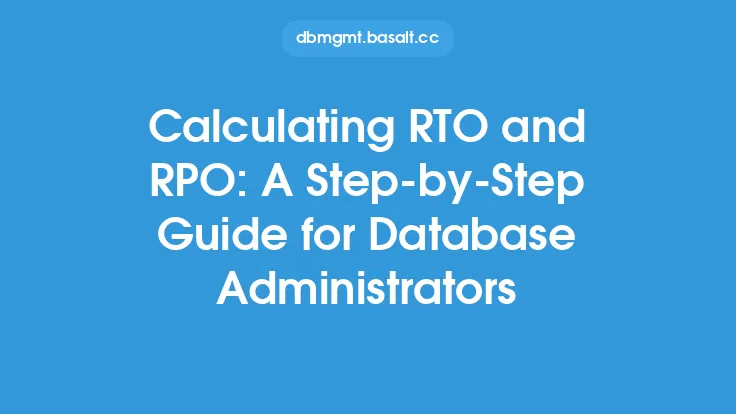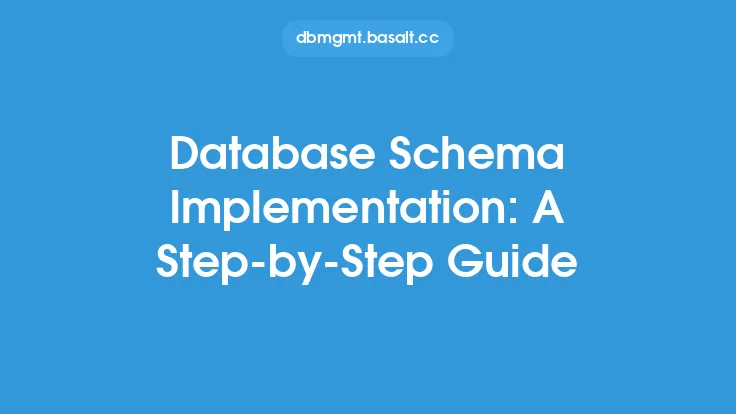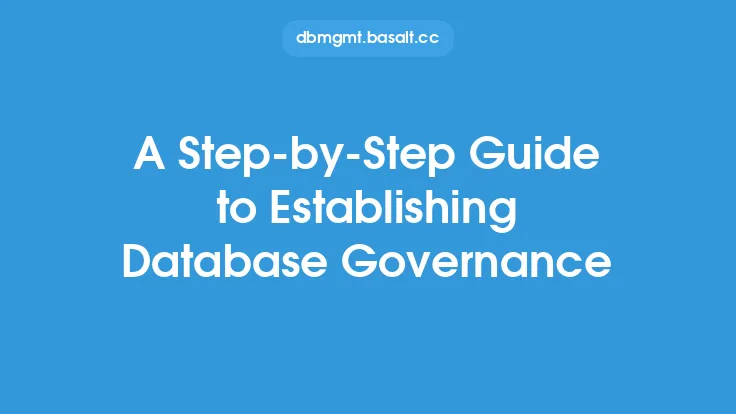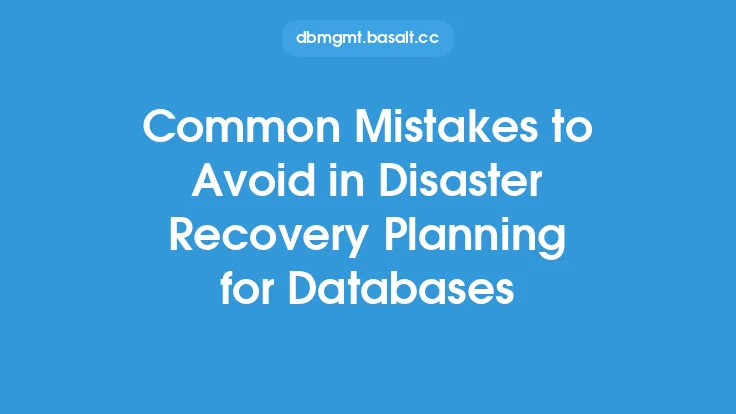Disaster recovery planning is a critical aspect of database management, as it ensures that an organization's databases are protected against potential disasters, such as natural disasters, hardware failures, software corruption, and cyber-attacks. A well-planned disaster recovery strategy can help minimize data loss, reduce downtime, and ensure business continuity. In this article, we will provide a step-by-step guide on how to create a disaster recovery plan for databases.
Introduction to Disaster Recovery Planning
Disaster recovery planning involves creating a comprehensive plan that outlines the steps to be taken in the event of a disaster. The plan should include procedures for backup and recovery, data replication, and system restoration. It's essential to have a disaster recovery plan in place to ensure that an organization's databases are protected and can be quickly restored in the event of a disaster. A good disaster recovery plan should be tailored to the specific needs of the organization and should be regularly reviewed and updated to ensure that it remains effective.
Assessing Database Vulnerabilities
The first step in creating a disaster recovery plan is to assess the vulnerabilities of the database. This involves identifying potential risks, such as hardware failures, software corruption, and cyber-attacks. It's essential to evaluate the database's current backup and recovery procedures, as well as its data replication and system restoration capabilities. This assessment will help identify areas that need improvement and will provide a foundation for creating a comprehensive disaster recovery plan.
Creating a Disaster Recovery Team
A disaster recovery team should be established to oversee the development and implementation of the disaster recovery plan. The team should include representatives from various departments, such as IT, database administration, and management. The team's responsibilities should include developing and testing the disaster recovery plan, as well as ensuring that the plan is regularly reviewed and updated. The team should also be responsible for training personnel on the disaster recovery procedures and ensuring that all team members understand their roles and responsibilities.
Developing a Backup and Recovery Strategy
A backup and recovery strategy is a critical component of a disaster recovery plan. The strategy should include procedures for backing up database files, transaction logs, and other critical data. The strategy should also include procedures for recovering data in the event of a disaster, such as restoring from backups or using data replication. It's essential to consider the recovery time objective (RTO) and recovery point objective (RPO) when developing the backup and recovery strategy. The RTO is the maximum amount of time that an organization can afford to be without access to its databases, while the RPO is the maximum amount of data that an organization can afford to lose.
Implementing Data Replication
Data replication is an essential component of a disaster recovery plan, as it ensures that data is available in the event of a disaster. There are several data replication methods, including synchronous replication, asynchronous replication, and semi-synchronous replication. Synchronous replication involves replicating data in real-time, while asynchronous replication involves replicating data at regular intervals. Semi-synchronous replication involves replicating data in real-time, but with a slight delay. The choice of data replication method will depend on the specific needs of the organization and the type of database being used.
Testing the Disaster Recovery Plan
Testing the disaster recovery plan is essential to ensure that it is effective and that all team members understand their roles and responsibilities. The plan should be tested regularly, using simulated disaster scenarios, such as a hardware failure or cyber-attack. The testing process should include restoring databases from backups, recovering data using data replication, and verifying that all systems are functioning correctly. The testing process should also include evaluating the RTO and RPO to ensure that they are met.
Maintaining and Updating the Disaster Recovery Plan
The disaster recovery plan should be regularly reviewed and updated to ensure that it remains effective. This involves evaluating the plan's effectiveness, identifying areas for improvement, and updating the plan to reflect changes in the organization's database infrastructure. The plan should also be updated to reflect changes in the organization's business continuity requirements, such as changes in the RTO and RPO. It's essential to ensure that all team members are aware of the updates and understand their roles and responsibilities in the event of a disaster.
Using Automation Tools
Automation tools can be used to simplify the disaster recovery process and reduce the risk of human error. Automation tools can be used to automate backup and recovery procedures, as well as data replication and system restoration. There are several automation tools available, including database management systems, backup and recovery software, and cloud-based disaster recovery services. The choice of automation tool will depend on the specific needs of the organization and the type of database being used.
Monitoring and Auditing
Monitoring and auditing are essential components of a disaster recovery plan, as they ensure that the plan is effective and that all procedures are being followed. Monitoring involves tracking the database's performance and identifying potential issues, such as hardware failures or software corruption. Auditing involves evaluating the plan's effectiveness and identifying areas for improvement. The auditing process should include evaluating the RTO and RPO, as well as verifying that all systems are functioning correctly.
Conclusion
Disaster recovery planning is a critical aspect of database management, as it ensures that an organization's databases are protected against potential disasters. A well-planned disaster recovery strategy can help minimize data loss, reduce downtime, and ensure business continuity. By following the steps outlined in this article, organizations can create a comprehensive disaster recovery plan that meets their specific needs and ensures the availability and integrity of their databases. Regular testing, maintenance, and updates are essential to ensure that the plan remains effective and that all team members understand their roles and responsibilities in the event of a disaster.





